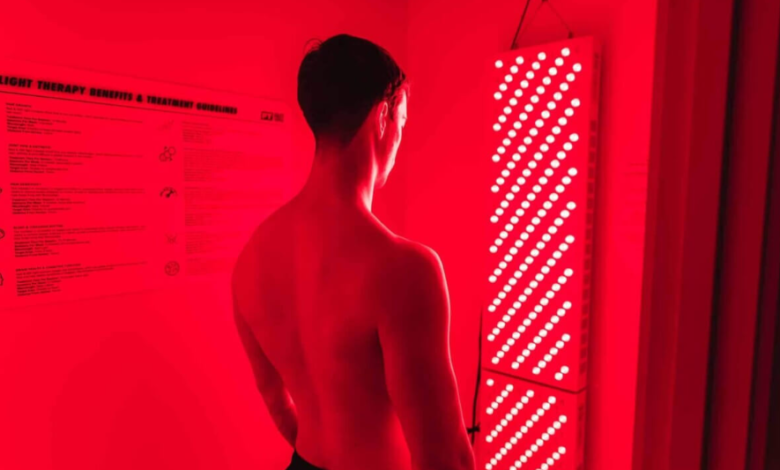How to Use Light Therapy Lamps for Maximum Health Benefits

Light therapy lamps are gaining popularity as a natural, non-invasive approach to boosting mental and physical well-being. If you’re curious about how these lamps work and how they can benefit you, you’ve come to the right place. This guide will explore the various benefits of light therapy lamps, explain how to use them effectively, and help you make an informed decision if you’re considering adding one to your lifestyle.
Understanding Light Therapy Lamps
Light therapy lamps are specially designed devices that emit light similar to natural sunlight. By replicating the benefits of natural daylight, they can help regulate your body’s internal clock, improve mood, and offer a variety of health benefits.
Types of Light Therapy Lamps
There are a few types of light therapy lamps available to meet different needs:
- Full-spectrum lamps: Mimic the natural spectrum of sunlight, ideal for general mood improvement.
- Blue light lamps: Often used to help with alertness and energy levels but may not be suitable for everyone.
- Red light lamps: Commonly associated with skin health and anti-aging effects.
- UV-free lamps: Designed specifically for safe daily use without harmful ultraviolet rays.
How Do They Work?
Light therapy lamps work by delivering specific light wavelengths to stimulate the brain’s production of serotonin (the “feel-good” hormone) and regulate melatonin, the hormone responsible for your sleep-wake cycle. A consistent routine using light therapy can help balance these processes, improving your mental clarity, mood, and overall health.
Read more: Easily Handle Daily Web Needs with 360 High-Speed Browser
Health Benefits of Light Therapy
Light therapy lamps are versatile and can address a variety of health concerns. Here’s how they help in specific areas:
Seasonal Affective Disorder (SAD)
Seasonal Affective Disorder (SAD) is a type of depression triggered by shorter daylight hours during fall and winter. Regular exposure to light therapy lamps can help relieve symptoms by counteracting reduced natural sunlight, improving mood and energy levels.
Sleep Disorders
Struggling to fall asleep? Light therapy can help regulate your circadian rhythm and promote better sleep patterns. Blue or full-spectrum light in the morning signals your body to wake up and stay energized throughout the day.
Skin Conditions
Some light therapy lamps are designed to target skin issues like acne, eczema, and psoriasis. Red and blue light-based devices are particularly effective in reducing inflammation and promoting skin healing.
Other Potential Benefits
While still being researched, light therapy may also support mental focus, reduce jet lag, and even contribute to better athletic performance by optimizing overall well-being.
How to Use Light Therapy Lamps Effectively
Best Time of Day
The best time for light therapy depends on your goals. For boosting energy or tackling SAD, use the lamp soon after waking up. To improve sleep, avoid exposure to light therapy during the evening or bedtime hours.
Duration and Frequency
Most experts recommend sessions lasting 20-30 minutes per day, though you may need to adjust this depending on your sensitivity to light and your health needs. Consistency is key, so try to use your lamp daily for the best results.
Proper Positioning and Distance
Place the lamp at a distance of 16-24 inches from your face. Ensure the light is angled downward, allowing your eyes to absorb the light indirectly. You don’t need to stare directly into the lamp; you can go about your usual activities like reading or working while benefiting from the exposure.
Choosing the Right Lamp
When selecting the perfect light therapy lamp, keep these factors in mind:
- Brightness levels: Look for lamps with at least 10,000 lux for effective light intensity.
- UV protection: Opt for lamps that filter out harmful UV rays.
- Size and portability: If you’re always on the move, a compact, lightweight lamp may be your best option.
- Features: Consider lamps with adjustable brightness settings and timers to customize your sessions.
Safety and Side Effects
Although light therapy lamps are generally safe to use, you should follow some precautions to avoid discomfort:
- Monitor side effects: Some users may experience headaches, nausea, or eye strain during the initial sessions. Reduce the duration or increase the lamp distance if this happens.
- Avoid overexposure: Spending too much time with the lamp may disrupt your sleep or cause irritability.
- Consult a professional: If you have existing health conditions, like eye problems or bipolar disorder, consult your doctor before starting light therapy.
Start Reaping the Benefits Today
Light therapy lamps offer a simple, yet effective, way to improve mental health, regulate sleep, and support overall well-being. By choosing the right lamp, following best practices for use, and understanding the potential benefits, you can incorporate this powerful tool into your routine with confidence.
Take the first step toward a brighter and healthier future. Start your light therapy journey today, and enjoy the vitality and balance it can bring to your life.



